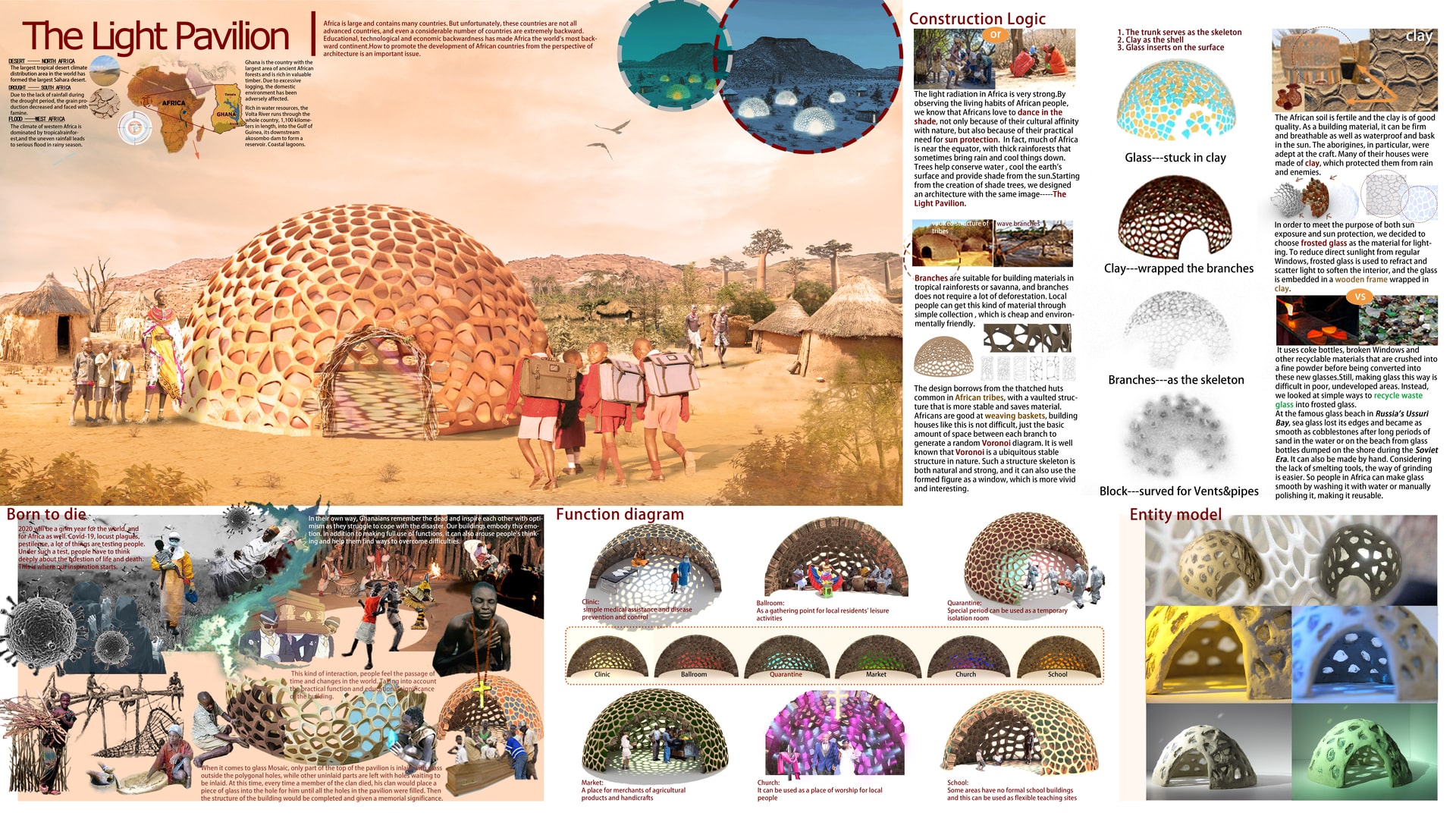Project Description
Africa, with its unique natural environment and geographical location, has attracted the attention of the world. In recent years, the international community has been paying close attention to the development of Africa. Designers should also think about how to improve the lives of Africans. The programme has made a series of attempts to bring better human settlements to Africa in a form suited to the local level of development. Much of Africa is needy and backward. Poverty leads to high fertility rates, which in turn leads to resource shortages, while traditional and backward production activities create a range of ecological problems. Behind the ecological deterioration lies the lack of educational resources and the poor living surroundings. As architecture students, we think about how to improve the living conditions of local residents in terms of architecture, and solve educational and economic problems indirectly from the perspective of architecture itself. For our African friends, affordable, easy to build and durable living spaces and public buildings are important at the residential level. On the basis of low-cost, it is necessary for architects to improve users' comfort and spiritual experience as much as possible. Ghana is a multi-tribal country, mostly black Sudanese. Most Ghanaians are religious. In Ghana, when a person dies, family members need to post a obituary quickly. But Ghanaians are also wary of saying the word "death" directly, use metaphors such as "he said goodbye to food" and "a tree fell" usually. In rural Ghana, most villagers return to help with funerals, helping others and hoping for help of themselves in the future. In Ghana, a funeral is more like a big "party". In Africa, where there is a lot of light radiation, cooling off from the heat is one of the building's concerns. Africans are keen on dancing in the shade. In addition to cultural affinity with nature, there are more practical requirements for sun protection. Local residents also use clothing to protect them when they participate in outdoor activities for the purpose of sun protection. In Africa, the sun shines for a long time, so the shade becomes a natural place for local people to take advantage of the sunlight. We started from the creation of shade trees, combined with local customs and environmental advantages to adapt to the African art form, designed a building with the same image -- the sun pavilion.
